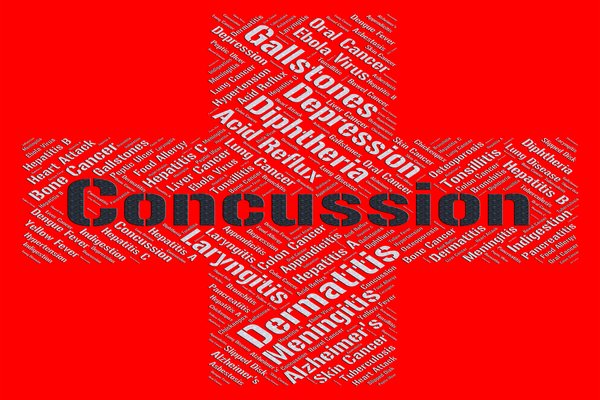
Free Consultation(203) 447-0000

Free Consultation(203) 447-0000

A concussion occurs when an impact causes the brain to smash against the skull, resulting in brain injury. Since sports-related concussions occur with alarming frequency, laws have been put into place to try to prevent these sorts of accidents. If an accident does occur, Connecticut personal injury law entitles the victim to financial compensation.
The most common victims of sports-related concussions are teenagers and professional athletes. Most of these accidents occur during actual games, even though the average athlete spends more time in practice than in games. The two main reasons athletes suffer serious concussion injuries are (i) the symptoms are not recognized, resulting in failure to seek medical treatment, and (ii) athletes are returned to the field too soon after suffering a head injury.
It is important that you recognize the symptoms of a concussion for legal as well as medical reasons. If you delay seeking medical attention and you subsequently file a claim for compensation, your delay could open the door for the insurance company to claim that your head injury didn’t occur until after the sporting activity that you claim was the cause of your injury.
A concussion is considered a “mild” Traumatic Brain Injury (TBI). The following are some of the most common warning signs of TBI:
The foregoing is an incomplete list of symptoms. In fact, the symptoms of a concussion can sometimes be milder and more varied than the symptoms listed above. It is best to seek medical attention any time you even suspect a concussion.
Concussions are common occurrences. The Centers for Disease Control and Prevention (CDC) reports that nearly three million people are treated for TBI every year from all causes (not limited to sports injuries). Although these numbers have increased rapidly in recent years, the death rate has declined over the same period, indicating that these statistics reflect more people seeking medical treatment rather than an actual rise in the number of concussions.
A more disturbing study released by the UPMC Sports Medicine Concussion Program (UPMC) estimates that between 1.7 million and 3 million sports-related concussions occur every year. These high figures are a result of the UPMC’s estimate than only about half of all concussion victims receive any medical treatment at all – either due to deliberate failure to seek treatment or failure to recognize the symptoms of a concussion.
The following is a list of some of the most disturbing sport-related concussion statistics according to the Brain Injury Research Institute:
The most dangerous team sports, in rank order, are as follows:
Obviously, boxing would top the list if individual sports were included, since the object of the game is to inflict a concussion on your opponent (a “knockout”). It is also worth noting that girls tend to suffer a higher rate of concussions than boys do.
There a number of things you can do, as a parent or a coach, to reduce the risk of concussions among sports participants:
The failure of half of all concussion victims to seek treatment is disturbing, especially for people involved in contact sports. A phenomenon known as second impact syndrome often occurs when someone experiences a second concussion before fully recovering from the first concussion.
Second impact syndrome results in a catastrophic swelling of the brain that results in death or lifelong disability. As you might imagine, the consequences of sending a player back onto the field soon after a concussion can result in severe civil and even criminal penalties.
The CDC recommends the completion of a five-step progression to return a concussion victim to the playing field:
The timing of these five steps will vary from individual to individual, but it is best to be cautious. Always follow medical advice, and carefully monitor the player’s physical and cognitive performance through each stage of recovery.
In response to a multitude of serious sports-related head injuries among teenagers who should have been more closely supervised by coaches and other adults, Connecticut began enacting concussion laws designed to reduce the incidence of concussions among athletes and to improve medical outcomes when such injuries do occur.
Under Connecticut’s concussion laws:
To win compensation for a concussion under Connecticut personal injury law, you must prove three facts:
Negligence: In Connecticut, proof that the defendant violated a safety law, such as one of the laws stated above, is often considered to be proof of negligence. This might apply if, for example, the victim’s coach sent him back into competition without medical clearance and he suffered a second head injury. You can also prove negligence without proving any violation of the law.
Damages (losses): You will need to prove all of the damages you are claiming using admissible evidence. If you are claiming $10,000 in medical expenses and $25,000 in pain and suffering, for example, you will need to prove these amounts. Medical testimony, for example, might be enough to prove the extent of your pain and suffering.
Causation: You must prove that the defendant’s negligence actually caused your damages. This might be difficult if, for example, the coach violated the law by failing to inform the victim’s parents within 24 hours of the injury but no medical problem suffered by the victim could be traced to that failure.
Comparative fault: Your compensation could be reduced or even eliminated altogether if you are found to be partially at fault for your own injuries. This might occur if, for example, you voluntarily failed to properly use safety equipment.
In 2016, the US Supreme Court affirmed a settlement by which the National Football League will pay around a billion dollars over the next 65 years to settle a lawsuit brought by tens of thousands of former NFL players. The lawsuit was filed over the league’s negligent approach to concussions and other head injuries. Although payouts vary, some players are receiving as much as $5 million.
If you or your loved one has suffered a sports-related head injury, telephone Berkowitz Hanna anytime 24/7, or by contacting s online so that we can schedule a free initial consultation. We serve clients throughout Connecticut from our offices in Stamford, Bridgeport, Danbury, and Shelton. And remember: We charge no upfront fees, and we work for free unless we win your case.
Berkowitz Hanna
